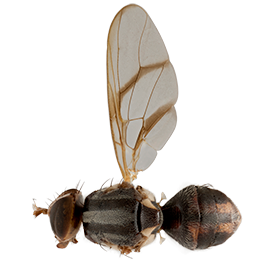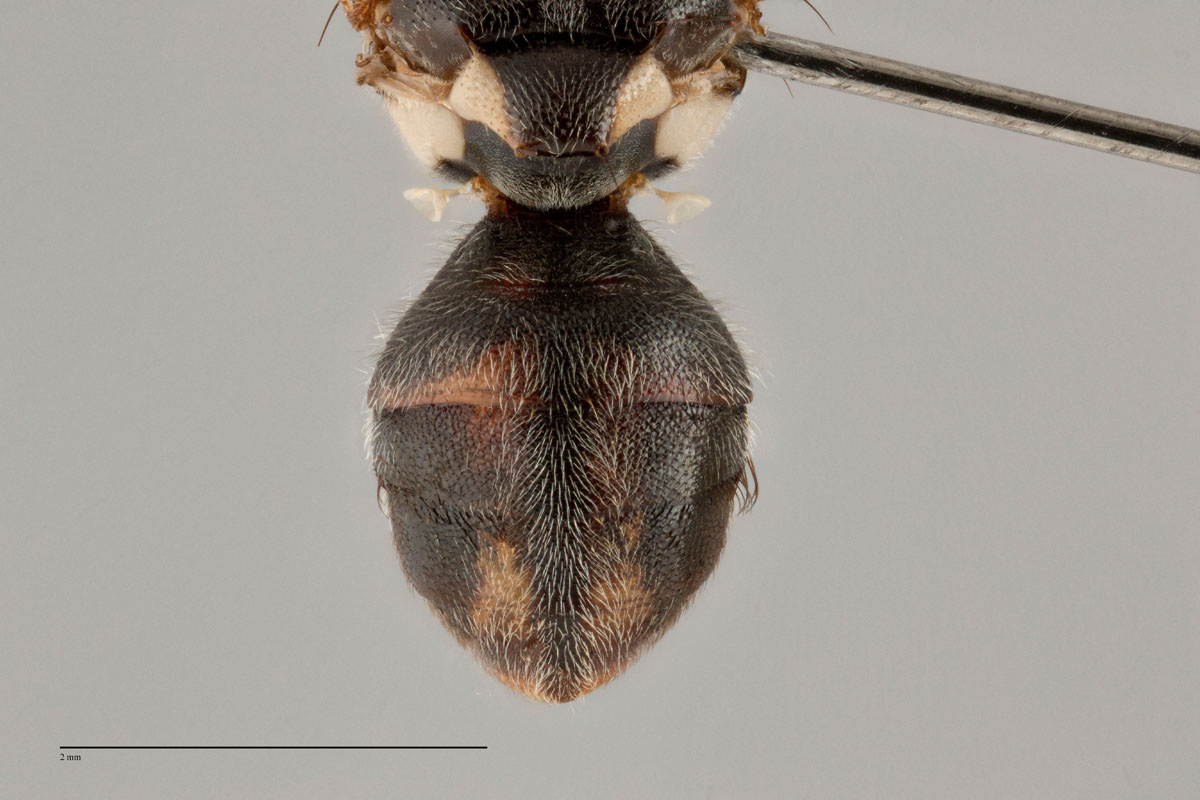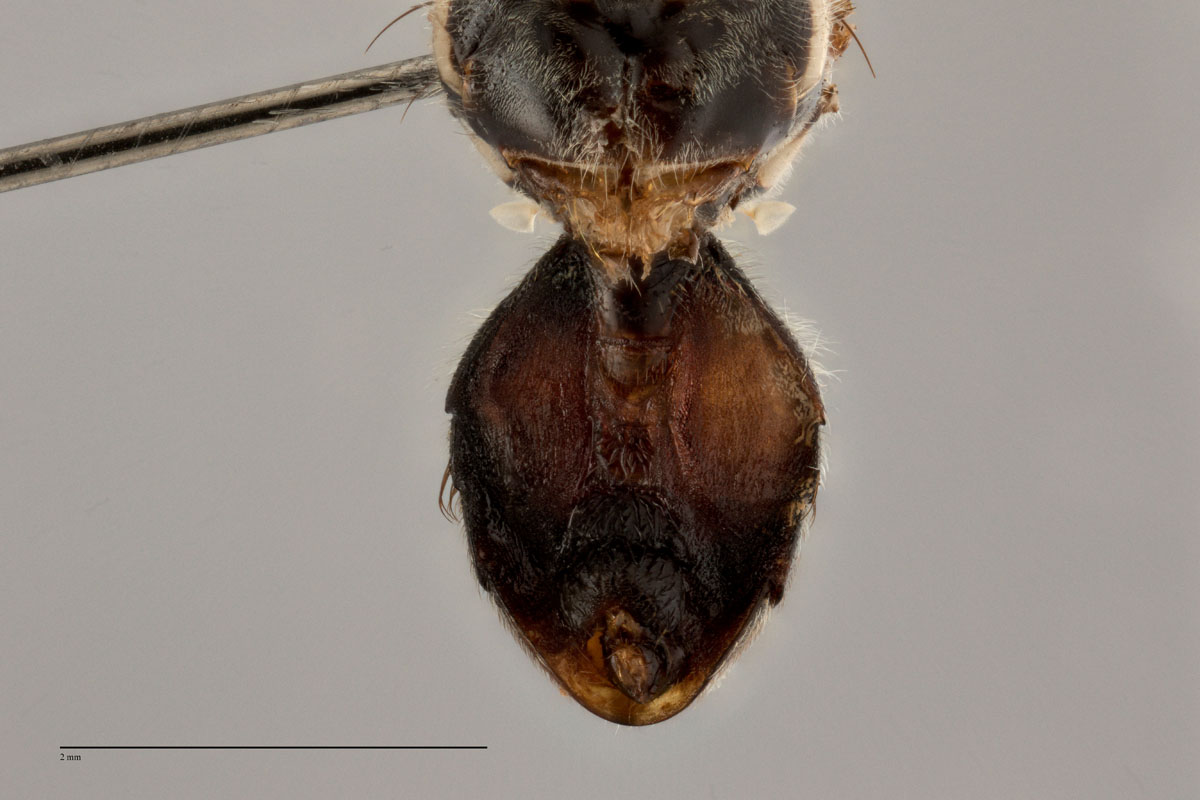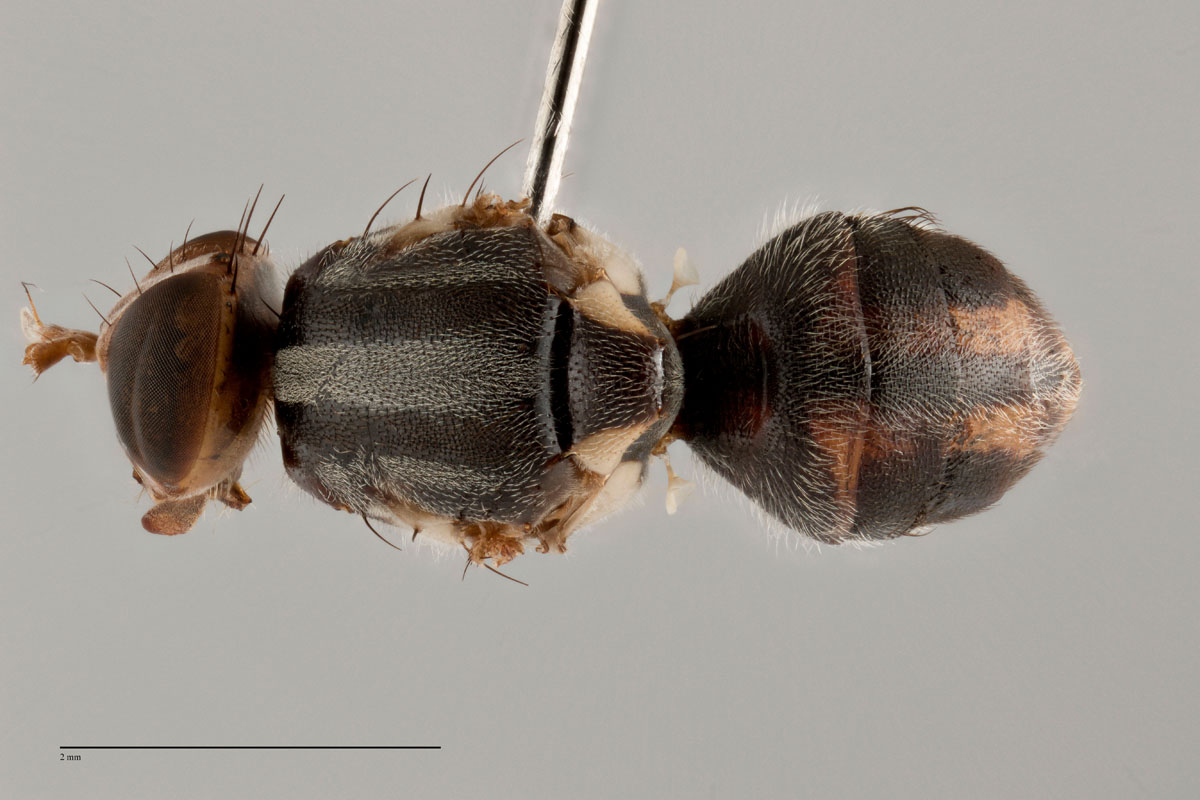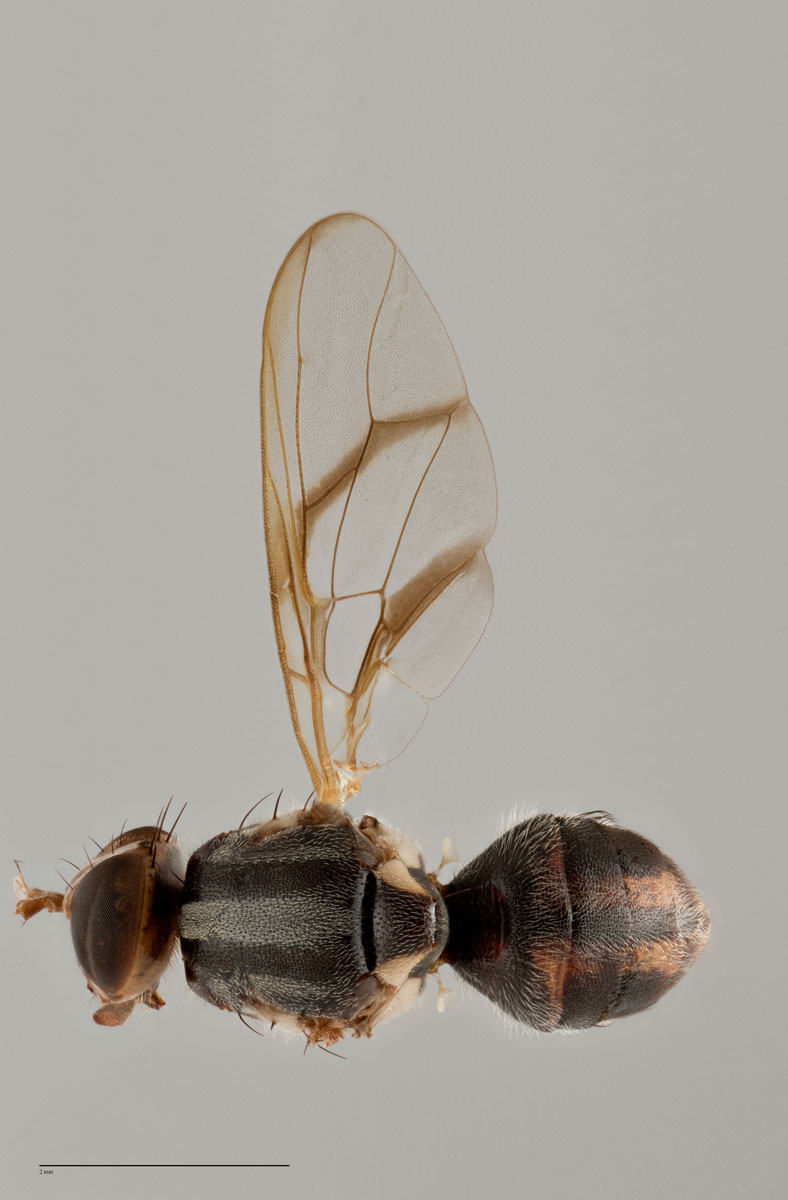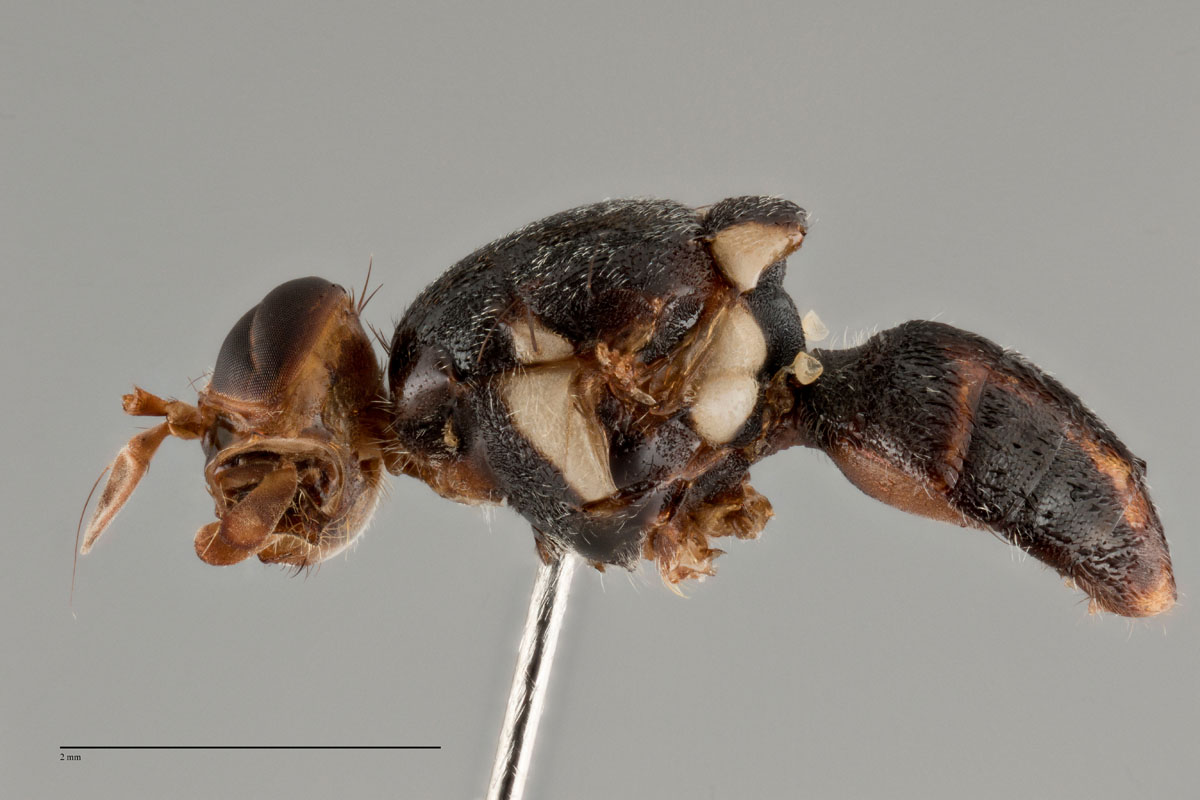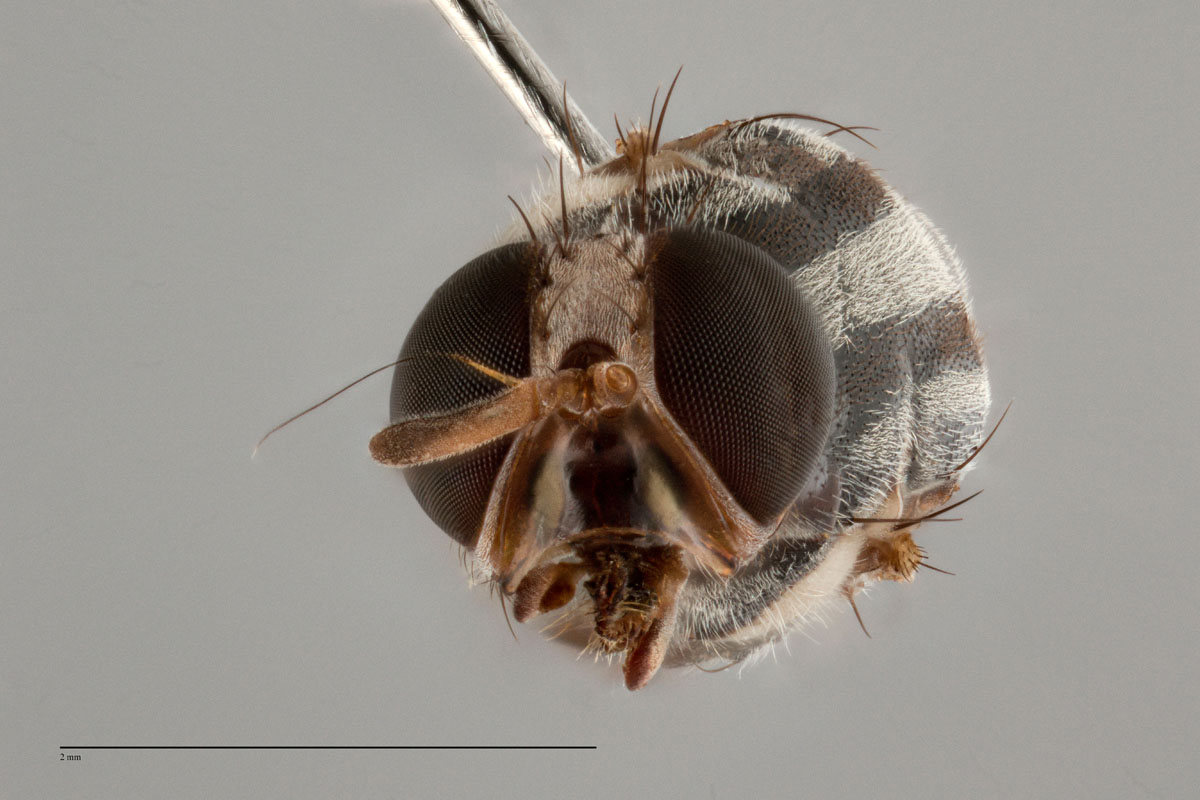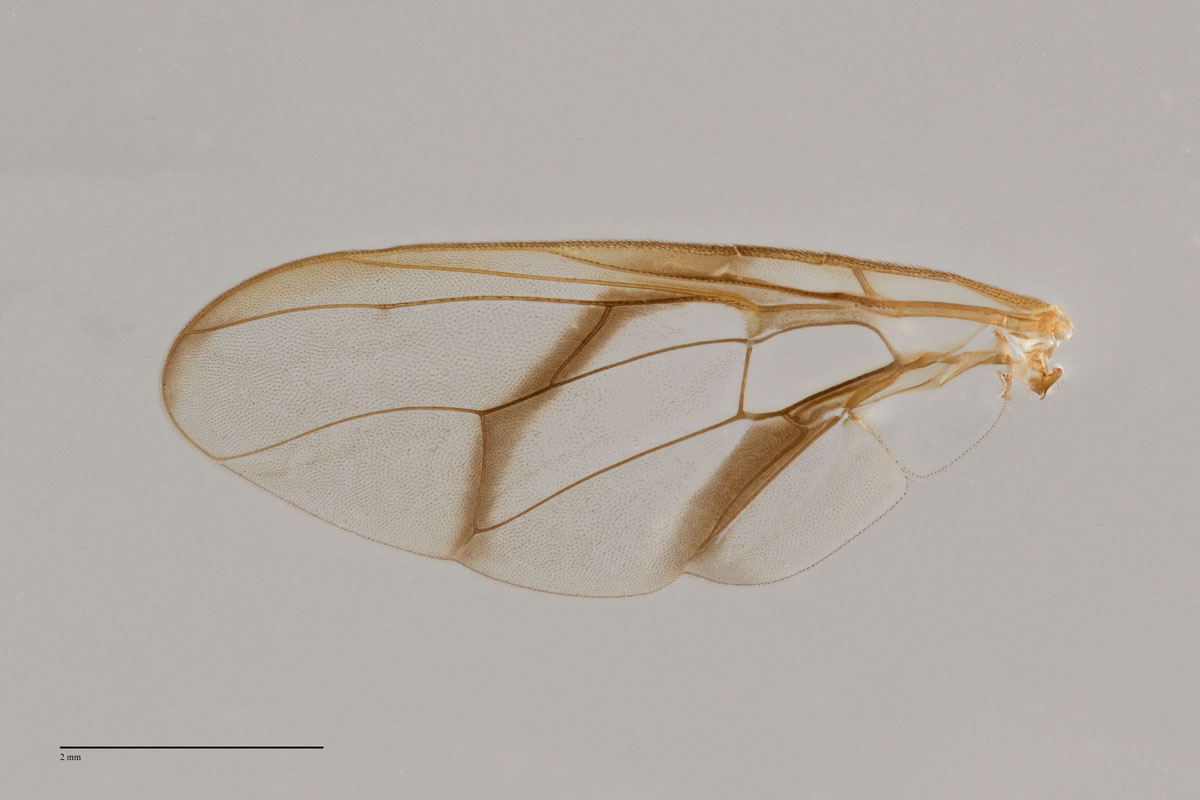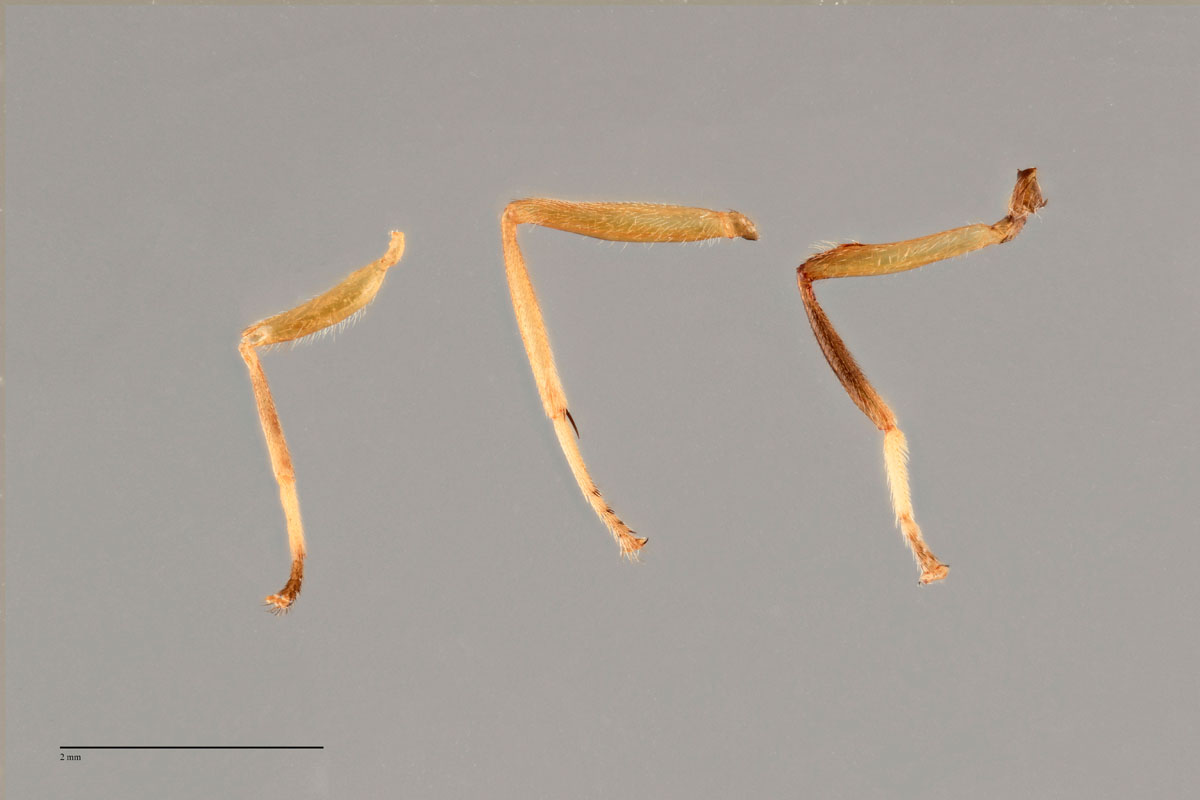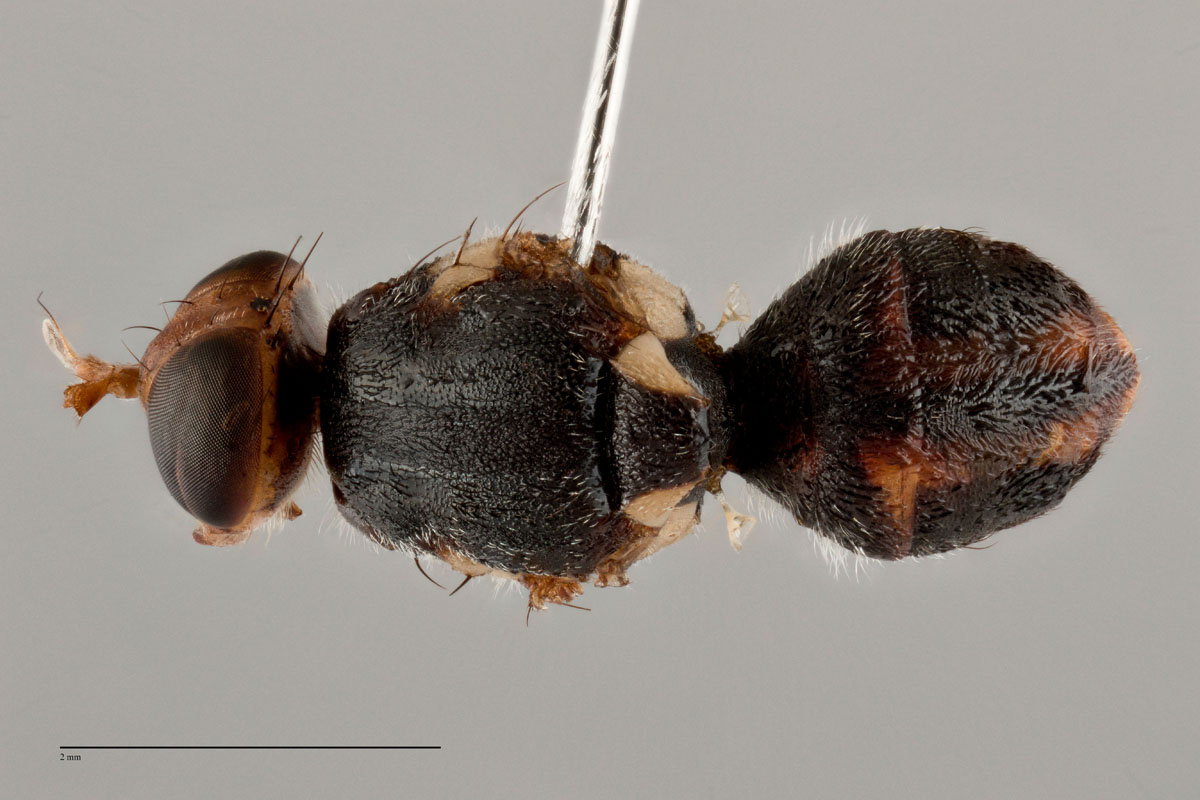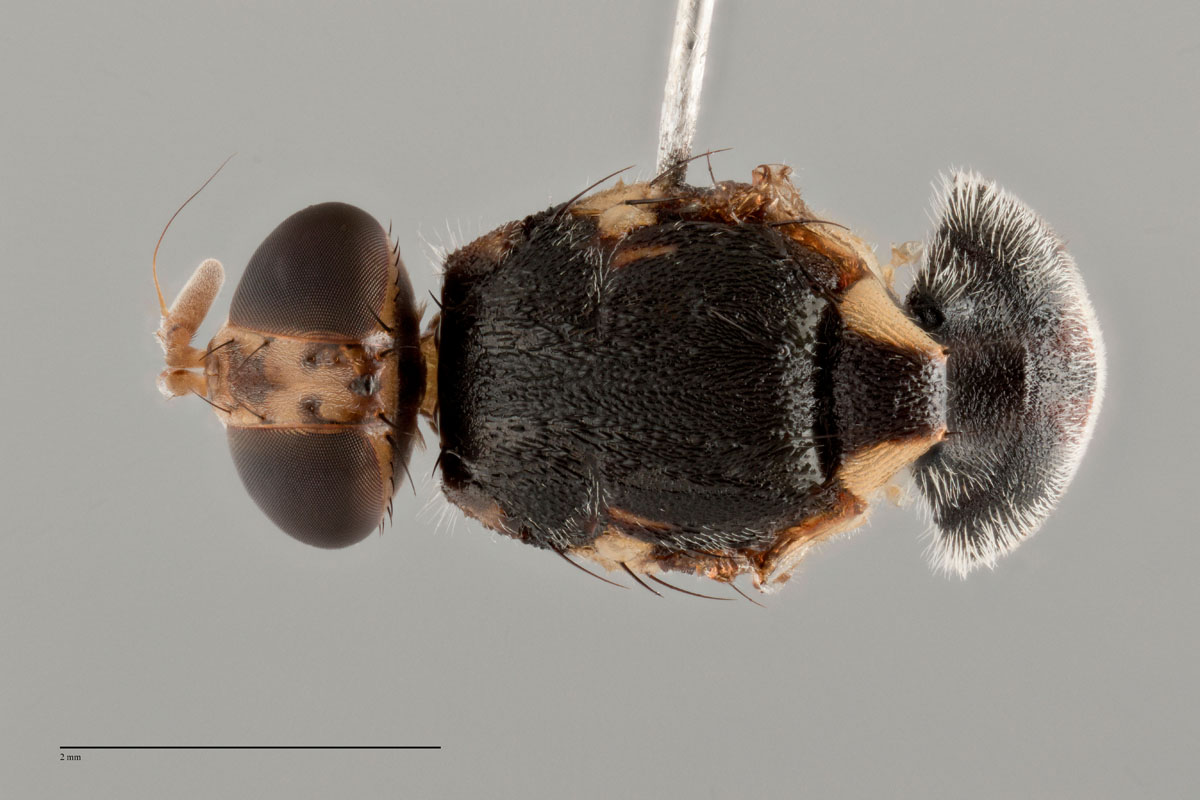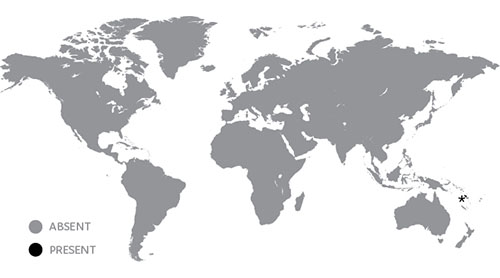Diagnosis
Morphological – adult
Features include:
- medium sized species
- face entirely glossy black
- postpronotal lobes fuscous to black
- notopleura yellow
- scutum glossy black
- mesopleural stripe reaching midway between anterior margin of notopleuron and anterior npl. seta
- lateral and medial postsutural vittae absent
- scutellum glossy black with lateral margins yellow
- wing with a narrow extremely pale fuscous costal vein and broad fuscous anal streak
- a narrow fuscous transverse band across wing
- cells bc and c extremely pale fuscous
- microtrichia covering outer ½ of cell c only
- abdominal terga mostly glossy black except for two broad longitudinal fulvous bands on terga II-V either side of a broad medial longitudinal glossy black band
- posterior lobe of male surstylus short
- female with aculeus tip needle shaped (Drew 1989; pers. comm. Drew 2010).
Morphological – larvae
Information not available.
Molecular
DNA barcoding
Diagnostic BOLD reference data available.
DDOSTs2 data
B. trilineola TRL003 Classic specimen DDOSTs2
B. trilineola TRL004 Classic specimen DDOSTs2
EIF3L data
B. trilineola TRL003 Classic specimen EIF3L
B. trilineola TRL004 Classic specimen EIF3L
FCOI data
B. trilineola TRL003 Classic specimen FCOI
B. trilineola TRL004 Classic specimen FCOI
POP4 data
B. trilineola TRL003 Classic specimen POP4
B. trilineola TRL004 Classic specimen POP4
RPA2 data
B. trilineola TRL003 Classic specimen RPA2
B. trilineola TRL004 Classic specimen RPA2
PCR-RFLP Test 1
BsrI: Data not available
HinfI: Data not available
HhaI: Data not available
Sau3AI: Data not available
SnaBI: Data not available
SspI: Data not available
Vspl: Data not available
PCR-RFLP Test 2
B. trilineola cannot be distinguished from B. kirki or B. frauenfeldi. No distinctive restriction enzymes, but a combination of several can be chosen to distinguish this group from other Bactrocera and species in other genera.
See Restriction enzyme haplotype chart and Diagnostic restriction patterns.
